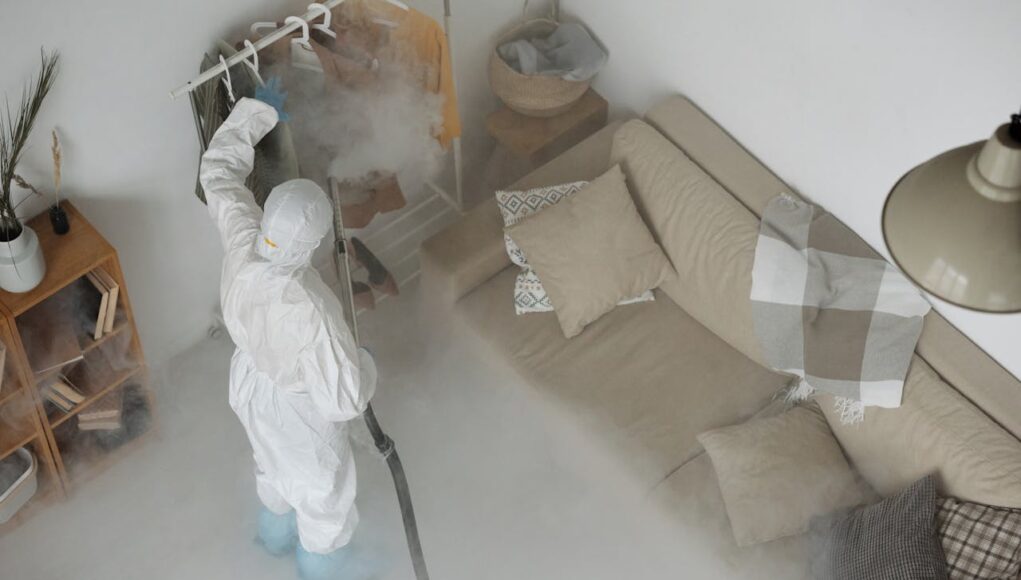Drain flies are like the annoying guests you do not want at home, and yet they end up coming. They are most common in the areas where residential areas have plenty of moisture, making them perfect breeding grounds. Utah’s humid atmosphere encourages drain flies to grow in number. It is critical to understand the elements that lead to their development in order to regulate them.
One of the key reasons drain flies thrive in Utah is the abundance of stagnant water in drains, sinks, and bathtubs. The sticky film or biofilms of microbes that form here attract these flies. Homeowners frequently underestimate drain flies and the kind of damage they can cause.
During the monsoon season, Utah observes considerable rainfall, which can quickly clog drains. This is their golden opportunity for the flies to breed. They can also infiltrate your house through gaps and crevices. Given all of the factors that contribute to the hazard, it is critical to find a pest control company in Orem to safeguard your family’s safety.
Why Are There Flies in My Home?
Flies can make their way into your home for multiple reasons. Food alone cannot be defined as one. Let us take a look at the possible factors that may contribute to flies coming to your home.
- Stagnant Water.
No matter how much you keep your house clean, there are a few situations where you will not be able to avoid flies. If you have stagnant water on your property, such as old pots or tubs filled with dirty water, you will attract these flies. Drain flies and other insects enjoy still water because it allows them to mate and produce eggs.
- Drains Are Clogged.
Clogged drains are a regular occurrence after a rainstorm. Be very cautious during the wet season. Clogged drains contain organic materials and dampness, which drain flies enjoy. This is the breeding ground for the drain flies, and this is what causes more flies if they are not taken care of.
- Toilets That Are Not Used.
If you live in a big house with a small family, there may be toilets or bathrooms that are rarely used. Such toilets tend to collect standing water. This makes them ideal places to nest for drain flies. This is a huge opportunity for the flies to build their home and start investing in themselves.
- Openings in a House.
If you have small openings in your house that are not filled, you are openly welcoming flies and pests. Drain flies can enter homes through entry points, including basements, windows, and exposed drains. When they get inside, they search for breeding places.
- Vents Have Become Clogged.
One place you cannot reach easily is the vents. However, making sure that they are cleaned from time to time can help prevent ant infestations. Blocked vents can generate damp conditions and debris, which drain flies prefer and grow in.
Tips On Preventing Drain Flies
- Maintaining cleanliness is necessary for keeping drain flies away. First, make sure your drains are clean. Drains gather food grease and debris, amassing organic waste, which these animals enjoy.
- Clean your drains using enzymatic or microbiological cleansers to eliminate any buildup. They are easily available in the market and can help out in cleaning places where human effort cannot reach.
- After that, ensure that there is no standing water on or near your home. This involves inspecting your garden, yard, and backyard. Inspect the bird feeders and your pet’s water containers.
- If it has recently rained, inspect the outside for collected rainwater. It would help if you addressed leaking pipes and other plumbing issues before moisture invites bugs. Make sure that you do the whole process properly.
- Ultimately, drain coverings are an efficient approach to combat drain flies. These covers keep trash and food particles from entering the drain, limiting the amount of food sources accessible to pests.
- Make sure that you keep sink and shower drains covered while not in use.
Apart from that if you want to know about “Hinged Screen Doors: Each And Everything You Need To Know About Hinged Screen Doors” then please visit our “Home Improvement” Category.








